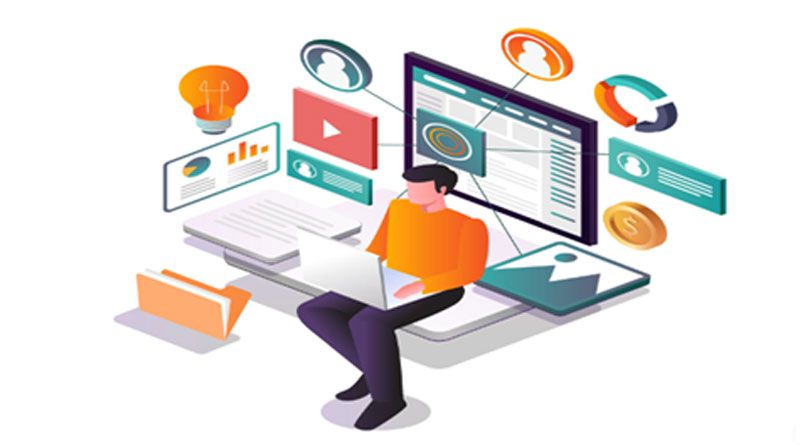The workplace has been evolving rapidly over the past few decades, with digital technologies playing a significant role in the way teams collaborate and work together. One of the most powerful tools that have emerged is creative collaboration software. This type of software enables teams to work together more efficiently and effectively, improving productivity, creativity, and innovation. In this blog post, we will explore the benefits of creative collaboration software, examples of such software, best practices for using it, and the challenges and limitations that it presents. We will also touch on the role of digital asset management software in enhancing collaboration.
Benefits of Creative Collaboration Software
Creative collaboration software has several benefits that make it an essential tool in the modern workplace. Here are some of the key advantages:
Increased productivity and efficiency: Creative collaboration software streamlines workflows and enables teams to collaborate more efficiently, saving time and resources. By providing a single platform for all team members to work on, there is no need for constant email communication or switching between different software tools.
Improved communication and transparency: Collaboration software enhances communication and transparency by enabling team members to share ideas and feedback in real time. This reduces misunderstandings and ensures that everyone is on the same page.
Enhanced creativity and innovation: Creative collaboration software provides a space for team members to share and build on each other’s ideas. This fosters creativity and innovation and can lead to the development of new and better solutions.
Better project management and organization: Collaboration software provides tools for project management and organization, ensuring that projects are completed on time and within budget. It also helps team members stay on top of tasks and deadlines.
Examples of Creative Collaboration Software
There are several types of creative collaboration software, each with its own unique features and benefits. Here are some examples:
Project Management Tools: Project management tools like Trello, Asana, and Basecamp provide a single platform for teams to manage projects, assign tasks, and track progress. They also allow team members to communicate and collaborate in real time, improving efficiency and transparency.
Virtual Whiteboards: Virtual whiteboards like Miro and Conceptboard enable teams to brainstorm and collaborate visually. They provide a space for teams to share ideas, sketches, and diagrams, making it easy to collaborate on complex projects.
Video Conferencing Software: Video conferencing software like Zoom and Google Meet enable remote teams to collaborate in real time. They allow team members to communicate face-to-face, improving communication and reducing misunderstandings.
Cloud Storage and File Sharing Platforms: Cloud storage and file-sharing platforms like Dropbox and Google Drive provide a secure space for teams to store and share files. They enable team members to collaborate on documents and projects in real time, reducing the need for email communication.
Best Practices for Using Creative Collaboration Software

To get the most out of creative collaboration software, it is essential to follow some best practices. Here are some tips:
Establishing clear goals and expectations: Before using collaboration software, it is important to establish clear goals and expectations for the project. This ensures that everyone is on the same page and working towards the same objectives.
Encouraging participation and feedback: Encourage team members to participate and provide feedback on projects. This fosters collaboration and ensures that everyone’s ideas are heard and considered.
Creating a collaborative culture: Creating a collaborative culture is essential for effective collaboration. Encourage team members to share ideas and collaborate with each other, fostering creativity and innovation.
Investing in employee training and development: Invest in employee training and development to ensure that team members are proficient in using collaboration software. This enhances productivity and ensures that everyone is on the same level.
Challenges and Limitations of Creative Collaboration Software
While creative collaboration software has several benefits, there are also some challenges and limitations to consider. Here are some of the main ones:
Technology limitations and compatibility issues: Different collaboration software tools may not be compatible with each other, leading to difficulties in sharing and accessing data. Additionally, some software may not be able to handle large files or complex projects, limiting their usefulness.
Overreliance on technology: Collaboration software can lead to an overreliance on technology, leading to a lack of personal interaction and communication. This can affect team dynamics and lead to a decrease in productivity and creativity.
Resistance to change and adoption: Some team members may be resistant to using new software tools or technologies, leading to difficulties in adoption and implementation. This can cause delays and hinder the effectiveness of the collaboration.
Security and privacy concerns: Collaboration software may pose security and privacy concerns, especially when dealing with sensitive data or information. It is essential to ensure that the software used is secure and that team members are trained in best practices for protecting data.
Digital Asset Management Software in Enhancing Collaboration
Digital Asset Management (DAM) software is another type of software that can enhance collaboration in the workplace. DAM software provides a centralized system for storing and organizing digital assets, such as images, videos, and audio files. It enables team members to access and share assets in real-time, improving collaboration and streamlining workflows.
DAM software can also help to ensure that all team members are using the correct versions of files, reducing the risk of errors and confusion. It can also provide valuable insights into how digital assets are being used, enabling teams to make data-driven decisions about their projects.
Conclusion
In conclusion, creative collaboration software is a powerful tool that can transform the way teams work together. By improving productivity, enhancing communication and transparency, fostering creativity and innovation, and providing better project management and organization, collaboration software can help teams achieve their goals more effectively. However, it is important to be aware of the challenges and limitations that it presents and to follow best practices to ensure its effectiveness. Additionally, digital asset management software can further enhance collaboration by providing a centralized system for storing and sharing digital assets. By embracing these tools, teams can work together more efficiently and effectively, driving success and growth for their organizations.

Namaste UI collaborates closely with clients to develop tailored guest posting strategies that align with their unique goals and target audiences. Their commitment to delivering high-quality, niche-specific content ensures that each guest post not only meets but exceeds the expectations of both clients and the hosting platforms. Connect with us on social media for the latest updates on guest posting trends, outreach strategies, and digital marketing tips. For any types of guest posting services, contact us on info[at]namasteui.com.

